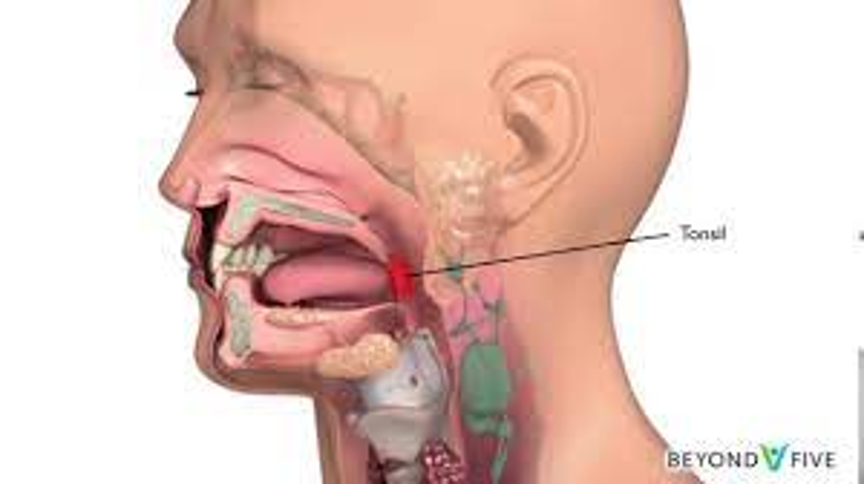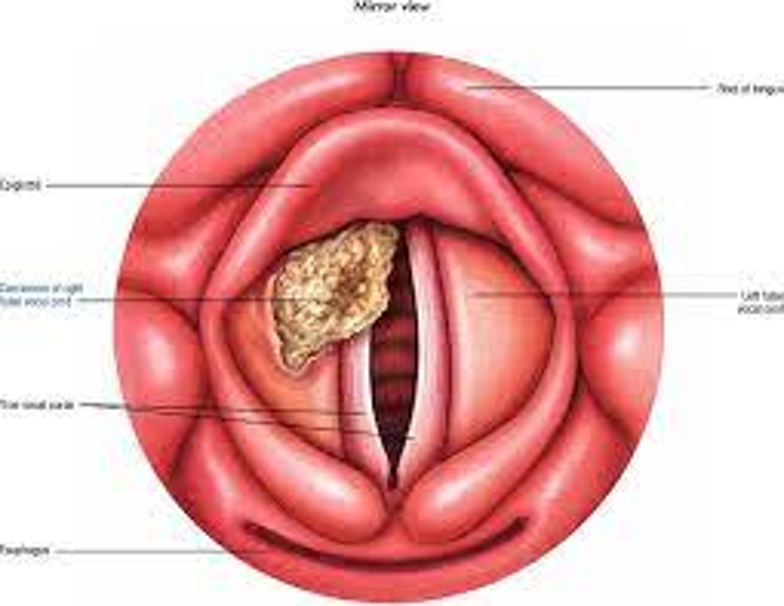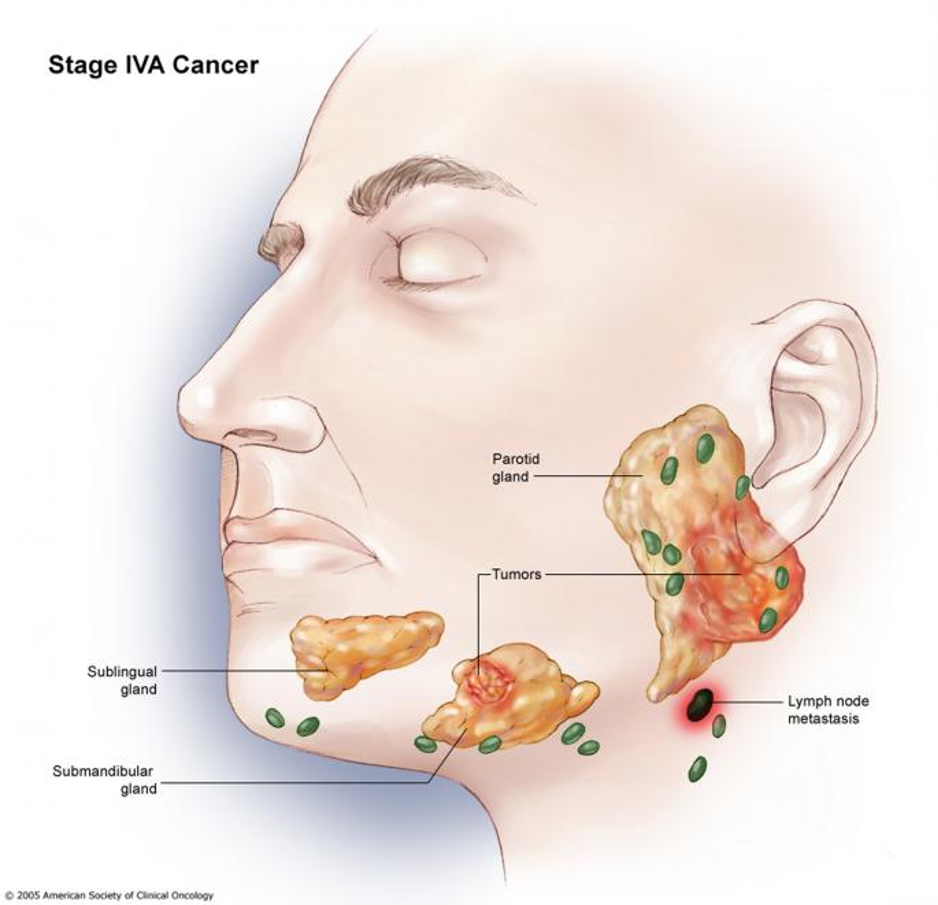Baş-Boyun Kanserleri
Baş-boyun kanserleri, ağız, burun, boğaz, sinüsler, tükürük bezleri ve gırtlak gibi bölgelerde gelişen malign tümörlerdir. Genellikle sigara, alkol kullanımı ve HPV enfeksiyonu gibi risk faktörleriyle ilişkilidir. Erken teşhis, bu kanserlerin tedavisinde büyük önem taşır ve cerrahi, radyoterapi ve kemoterapi gibi yöntemlerle tedavi edilebilir.
İlk Adımı Hemen Atın
Ayrıntılı bilgi için bize ulaşın
Prof. Dr. Mustafa Deniz Yılmaz ile görüşmenizi şimdi planlayın. Tedavi sürecinizde ilk adımı atın ve kişiye özel çözümlerle sağlığınıza kavuşma yolculuğunuza birlikte başlayalım.
Ağız ve Boğaz Bölgesi Kanserleri Nedir?
Ağız kanserleri sıklıkla 40 yaşın üzerinde ortaya çıkar ve erkeklerde oluşma olasılığı kadınlara oranla 2 kat fazladır. Ağız kanserlerinin oluştuğu en sık bölgeler; dil, ağız tabanı, dil köküne yakın yumuşak damak kısımları, dudaklar ve diş etleridir. Ağız kanseri erken dönemde teşhis edilerek tedavi sağlanmazsa yayılarak sürekli ağrı, fonksiyon kaybı, yüz ve ağız deformiteleri, hatta ölümlere neden olabilmektedir.

Ağız Kanserleri ve Dil Kanseri Nedenleri Nelerdir?
Ağız kanserlerinin kesin nedeni tam olarak bilinmemekle birlikte sigara, tütün ürünleri, alkol, HPV virüsü ve bazı besinlerdeki karsinojen maddelerin ağız kanseri riskini arttırdığı bulunmuştur. Genetik yatkınlıkta ağız ve dil kanserleri için önemli risk faktörleri arasındadır.

Ağız Kanserlerinin Belirtileri Nelerdir?
Ağız içinde veya etrafında, dil üzerinde beyaz veya kırmızı renkli alanlar şeklinde görülür. Eğer altta yatan sebep bir HPV virüsüne bağlı bir lezyon ise daha çok kondilom, siğil şeklinde görülmektedir. Ağızda veya boğazda tekrarlayan kanamalar, seste boğukluk veya boğazda yutulamayan cisim hissi, çiğneme ve yutma güçlüğü, dil ve çene hareketlerinde zorlanma, dil veya ağzın diğer bölgelerinde his kaybı, uyuşukluk, ağızda kitle – lezyon hissi ağız ve dil kanserinin belirtilerinden olabilmektedir.
HPV Virüsü Ağız Kanseri ve Dil Kanseri İçin Risk Oluşturur Mu?
Çok nadir görülen ağız kanseri ve dil kanseri için oral seks ile bulaşan HPV virüsü son yıllarda önemli sebeplerden biri olarak gösterilmektedir. Boğaz kanserine de sebep olan bu virüs ülkemizde de gittikçe artan sıklıkta görülmektedir. Unutmamak gerekir ki, genital bölgede siğil olan ve oral seks hikayesi olan kadınların ağız bölgelerinde kondilom, siğil ve benzeri lezyonların da aynı anda görülmesi bir hekime başvurmalarını gerektirmektedir.

Gırtlak Kanseri Nedir?
Gırtlak kanserleri, Kulak Burun Boğaz Hekimliğinde en sık görülen kanser türlerinden biridir.
Tümör genellikle, çevre organlara ve boyuna yayılmadan önce uzun süre gırtlak içinde sınırlı kalır. Erken tanı ile hastalığın tam olarak tedavi edilme şansı vardır.
Ancak ileri dönemlerde başvuran hastalarda ve bunların tedavisi sonucunda, hastanın yaşam kalitesini düşüren ve sosyal yaşantısında büyük sıkıntılara yol açan kalıcı fonksiyon kayıpları ortaya çıkabilir.
Hastanın ses tellerini tamamen kaybetmesine, konuşamamasına ve çevre ile olan iletişiminin tamamen kopma noktasına gelmesine neden olan gırtlağın tamamen çıkarılması, Hastanın boynunda nefes alabilmesi için kalıcı delik oluşturulması ortaya çıkabilecek sıkıntıların en uç noktasını oluşturur.

Gırtlak Kanseri Kimlerde Görülür?
Gırtlak kanserlerinin, diğer kanser türleri gibi nasıl oluştuğu kesin olarak bilinmemekle birlikte, sigara içimi ile doğrudan ilişkili olduğu ortaya konmuştur. Sigara ile birlikte alkol kullanımı bu riski artırmaktadır.
Gırtlak kanseri genellikle 50-60 yaş grubundaki erkeklerde sık görülür. Ancak giderek daha genç yaşlarda ve kadınlarda da görülmeye başladığı göz ardı edilmemelidir.
Gırtlak Kanseri Belirtileri Nelerdir?
Maalesef, diğer birçok kanser türünde olduğu gibi gırtlak kanserinin de hastalığa özgü bir belirtisi yoktur. Gırtlak kanserinin belirtileri daha çok organ içindeki yerleşimi ve büyüklüğü ile ilgilidir. Tümör ses telleri üzerine yerleşmiş veya bu bölgeye ilerlemişse ses kısıklığı ve ses kalitesinde değişiklikler genellikle ilk ortaya çıkan belirtilerdir. Bu nedenle uzun süren ses kısıklıkları ihmal edilmemeli ve mutlaka bir K.B.B Hastalıkları uzmanına başvurulmalıdır. Gırtlak kanserinin diğer belirtileri; boğazda takılma hissi, boğazda ağrı, kulaklara yansıyan ağrı şeklinde de olabilir. Bu belirtilerin herhangi bir boğaz rahatsızlığından (örneğin : farenjit) da kaynaklanabileceğine dikkat ediniz. Bu nedenle uzayan her türlü yakınmanız için doktorunuza başvurunuz. Büyük tümörler ise; nefes darlığı, yutma güçlüğü, yutma sırasında ağrı, kanlı balgam gibi belirtiler verirler. Hastada genel düşkünlük hali, kilo kaybı olabilir. Ancak bu belirtiler ortaya çıktığında hastalık oldukça ilerlemiştir. Kanser boyuna yayılmışsa, boynun yan tarafında şişlik ortaya çıkar.
Hastalığın Seyri Nasıldır?
Gırtlak kanserleri, genellikle uzun süre organ içinde kalırlar, yayılımlarını gırtlak içinde yaparlar. Daha sonra çevre organlara ve boyundaki lenf bezlerine yayılırlar. Kanserin, akciğer, kemik, karaciğer gibi uzak organlara sıçrama yapması nadirdir ve genellikle ileri tümörlerde görülür. Bu şekli ile vücudun diğer yerinde beliren birçok kanser türüne göre nisbeten daha ılımlı bir seyri vardır.
Gırtlak Kanserinin Klasik Tedavisi
Larenks kanseri bulunan bütün hastalar için bir tedavi seçeneği vardır. Tedavi türünün seçimi de kanserin larenksin neresinde olduğuna, evresine, kişinin yaşına ve genel sağlık durumuna göre yapılır.
Temel olarak üç tür tedavi yöntemi uygulanmaktadır :
- Cerrahi (kanserli dokunun ameliyatla çıkarılması)
- Radyasyon tedavisi (kanser hücrelerinin öldürülmesi için radyasyon ışınlarının kullanılması)
- Kemoterapi (kanser hücrelerini öldüren ilaçlarla tedavi)
Cerrahi: larenks kanserinin tedavisinde sık kullanılan ve birçok larenks kanserinde en etkili tedavi yöntemidir. Kanserin ve larenksin bölümlerinin çıkartılması için aşağıdaki ameliyatlardan biri kullanılabilir:
Kordektomi: bir ses telinin alınması
Parsiyel larenjektomi: Larenksin bir bölümünün alınması
Total larenjektomi: Larenksin tamamının alınması.
Bu ameliyatların hepsinde boynun ön kısmında nefes borusuna giden bir delik açılabilir ve buradan nefes alınması sağlanır. Total larenjektomide larenksin tamamı alındığından bu delik kalıcıdır. Diğer ameliyatlarda ise, ameliyat bölgesi iyileştikten sonra açılan delik kapatılır. Eğer kanser hücreleri boyundaki lenf bezlerine yayılmışsa veya yayılma ihtimali yüksek görülüyorsa, ameliyat sırasında boyundaki lenf bezlerinin de çıkarılması (boyun diseksiyonu) gerekebilir.
Lazer cerrahisi: Erken teşhis edilen bazı larenks kanserlerinde, kanser dokusunun lazer ışını ile kesilerek çıkarılması
Radyasyon Tedavisi: (Radyoterapi)’ de yüksek enerjili radyasyon ışınları kullanılarak kanser hücreleri öldürülür ve tümörler küçültülür. Radyasyon ışınları, larenks kanserlerinde genellikle boyna dışardan bir cihazla verilir. Uygulama, her gün belli dozda radyasyon verilmesi şeklinde yapılır ve bu tedavi larenks kanserlerinde genellikle 6 hafta sürer. Radyasyonun kanser hücreleri üzerindeki etkisini artırmak için radyoterapi sırasında bazı ilaçların da verilmesi gerekebilir.
Kemoterapide kanser hücrelerinin öldürülmesi için ilaçlar kullanılır. Kemoterapide kullanılan ilaçların bazıları ağızdan alınan haplar şeklindedir; ancak çoğu hastanede uygulanması gereken ve enjeksiyon şeklinde verilen ilaçlardır. Tedavi şekli; tümörün gırtlak içindeki yerleştiği bölge, yayılımları ve büyüklüğüne göre değişir. Hastanın yaşı, genel durumu, akciğer fonksiyonları ve hastanın tercihleri tedaviyi yönlendiren diğer hususlardır. Ülkemizde gırtlak kanserinin tedavisi ağırlıklı olarak cerrahi yöntemlerle yapılmaktadır. Radyoterapi (ışın tedavisi); ses telleri üzerindeki küçük tümörler için veya cerrahi tedaviyi tamamlayan yardımcı bir yöntem olarak 4-6 haftalık kürler şeklinde uygulanmaktadır. Büyük boyutlu yaygın tümörlerin sadece radyoterapi ile kontrol şansı oldukça azdır. Kemoterapi uygulaması (ilaç tedavisi) ise ancak büyük boyutlu yaygın tümörlerde, tümör hacmini küçültmek ve klasik tedavi şekillerine hazırlık olarak uygulanabilmektedir. Hastalığın tedavisinde, erken teşhisin önemi büyüktür. Küçük boyutlu kanserlerde, hastanın genel durumu da müsaitse, gırtlağın tamamının çıkarılmasına gerek kalmadan, kısmi cerrahi ile (konservatif cerrahi), sadece tümörlü kısım güvenli sınırlarla çıkarılmakta ve bu şekilde ses telleri ve gırtlağın diğer bölümleri korunabilmektedir. Bu grup ameliyatların çoğunda boğazda kalıcı delik açılmasına gerek kalmaz. Günümüzde gırtlağın tam olarak çıkarılmasına gerek kalmadan tedavisine imkan veren birçok cerrahi yöntem bulunmaktadır. Bu ameliyatlar ülkemizde, gırtlak kanseri konusunda uzmanlaşmış merkezlerde yapılmaktadır. Halbuki büyük boyutlu ve yaygın tümörlerde, gırtlağın tam olarak çıkarılması gerekli olabilir. Bu durumda, kanseri tedavi etmek için ses telleri feda edilmektedir. Hastanın nefes alabilmesi için de nefes borusu boyun cildine tespit edilir. Bu durumda hastada kalıcı delik oluşturulması zorunludur. Ancak ses telleri çıkarılan hastaların tekrar anlaşılabilir düzeyde konuşabilmesi için birçok yöntem bulunmaktadır. Bunlar arasında hastanın yutak sesini kullanabilmesi konusunda eğitimi, konuşma protezleri sayılabilir. Tümör yeri ve boyutları ile orantılı olarak boyundaki lenf bezlerine yayılım yapmışsa veya hasta bu risk altında ise, boynun tedavisi de ameliyat planına dahil edilir.
Hastalar Ne Kadar Yaşarlar?
Günümüzde uygulanan tedavi şekilleri ile hastaların tam olarak tedavisi ve uzun süreli yaşam mümkündür. Ancak bunun için hastalığın erken dönemde tanısı çok önemlidir. Genel bir ifade ile, ses telleri üzerindeki küçük bir tümörün tam olarak tedavisi ile 5 yıllık yaşam süresi olguların %90-95 inde mümkün olabilmektedir. İleri boyuttaki bir tümörde ise bu oranlar %35-50’ye düşmektedir. Bu bulgular, kanserin erken dönemde tedavisinin ne kadar önemli olduğunu vurgulamaktadır.
Tükürük Bezi Kanseri Nedir?

Tükürük bezleri ağız çevresinde ve boğazda yerleşmiştir. Başlıca parotis (kulak kepçesinin hemen altında) submandibuler (çene kemiği altında) ve sublingual (önde dilin altında) bezleridir.
Bütün bu bezler ağzın içine tükrük salgılara parotis üst dişler hizasındaki bir kanalla, submandibuler dil altındaki kanallardan ve sublingual bezlerde ağız tabınındaki küçük kanallardan salgılarını bomboş yaparlar.
Ana büyük bezlere ek olarak yüzlerce daha küçük bez yer almaktadır. Bunlar dudağın içinde, yanağın iç yüzünde yer almaktadır. Tükürük bezleri tarafından üretilen salgı ağzın nemli tutulmasını, sindirim başlamasını sağlar ve dişleri çürümeye karşı korur.
Kanserler Hakkında Uyarıcı İşaretlerin Bilinmesi?
Bir yılda 55000 Amerikalı’da baş ve boyun bölgesinde kanser tespit edildiğini, bunların 13000’ünün öldüğünü ve yine bunların önlenebileceğini biliyor muydunuz?

Tütün bu ölümlerin en çok önlenebilir nedenidir. Her yıl ABD’de 200.000’den fazla insan sigara ile ilişkili hastalıklardan ölmektedir. İyi haber bu sayının sigarayı bırakan Amerikalı sayısındaki artışla beraber düşmesidir. Kötü haberse bazı sigara içicilerinin dumansız tütün, çiğnenebilir tütün kullanımına yönelmesidir ki bunun güvenli bir alternatif olabileceği düşünülse de bu doğru değildir. Bu yalnızca kişideki kanser riskini akciğerlerden dudağa taşır. Akciğer kanseri görülme sıklığı azalırken baş boyun kanseri sayısında artış görülmektedir.
Baş boyun kanserleri erken yakalanırsa tedavi edilebilirler. Baş boyun kanseri erken belirti vermesi özelliği erken tanı konulabilmesini sağlar. Muhtemel uyarıcı işaretleri bilmeli ve doktorunuzu mümkün olan en kısa zamanda uyarmalısınız.
Baş boyun kanserlerinin başarılı tedavisinin erken teşhise bağlı olduğunu unutmayın. Uyarıcı bir takım belirtilerin bilinmesi baş boyun kanserinde yaşamınızı kurtarır.
Neleri Gözlemlemeliyiz?
Boyunda bir şişlik: Baş boyun kanserleri genellikle vücutta herhangi bir yere yayılmadan önce boyundaki lenf düğümlerine yayılır. Boyunda 2 haftadan uzun sürede geçmeyen şişlikler mümkün olan en kısa zamanda bir doktor tarafından görülmelidir. Tabii ki tüm şişlikler kanser demek değildir. Ancak şişlik ya da şişlikler ağız, gırtlak, guatr kanseri, bazı lenf kanserleri ve kan kanserinin ilk belirtisi olabilir. Böyle şişlikler genellikle ağrısız ve gittikçe büyüme eğilimindedir.

Ses değişimi: Pek çok gırtlak kanseri ses değişimine neden olur. 2 haftadan uzun süren ses kısıklığı ya da ses değişimleri doktorunuzu görmeniz açısından sizi uyarmalıdır. Bir Kulak Burun Boğaz ve baş boyun uzmanı; ses tellerinizi kolay ve ağrısız yöntemlerle muayene edebilir. Her ne kadar pek çok ses değişikliğinin nedeni kanser değilse de işi şansa bırakmamalısınız. Eğer ses kısıklığınız 2 haftadan uzun sürerse gırtlak kanseri olmadığınızdan emin olmalı ve doktorunuza gitmelisiniz.
Dudakta büyüme: Dil ve dudak kanserlerinin çoğu geçmeyen yara ve şişliğe neden olur. Yara ve şişlikler iltihaplanmadıkça ağrısızdır. Kanama görülebilirse de sıklıkla hastalığın ileri dönemlerine kadar görülmez. Yara ya da şişlik boyundaki bir kitleye eşlik ederse bu son derece ciddiye alınmalıdır. Diş doktorunuz ya da doktorunuz biyopsi (doku örnekleme testi) gerekip gerekmediğini değerlendirip bu işlem için sizi bir baş boyun cerrahına sevk edebilir.
Kanama: Bu sıklıkla kanser haricinde bir nedene bağlıdır. Bununla beraber ağız, burun, boğaz ve akciğer tümörleri kanamaya neden olabilirler. Birkaç günden fazla bir süre tükürük veya balgamda kanama görülürse doktora görünmelisiniz.
Yutma problemleri: Boğaz ve yemek borusu kanserleri katı gıdaların ve bazen sıvıların yutulmasını zorlaştırır. Gıda belli bir noktada batma hissi uyandırıp ya mideye gider ya da ağızdan geri gelir. Bu durumda bir doktora başvurmalısınız. Genellikle X ışınlı baryum yutma filmi ya da yutturulan bir tüp yoluyla yemek borusunun direkt muayenesi ile neden ortaya konur.
Ciltteki değişiklikler: Baş boyunda çok sık karşılaşılan deri kanseri erken başlanan tedaviye iyi yanıt verir. En sık alın, yüz, kulak gibi cildin güneşe maruz kaldığı yerlerde görülürse de cildin herhangi bir yerinde olabilir. Deri kanseri sıklıkla küçük soluk bir yara şeklinde başlar, yavaş büyür ve ortasında gamze şeklinde bir çukur ve hatta ülser oluşur. Bu alanın bir kısmı iyileşirken daha büyük bir bölümü ülsere kalır. Bazı deri kanserlerinde renk değişimi görülür.
Baş boyunda görülen diğer kanser tipleri arasında; yassı hücreli kanser ve habis melanom sayılabilir. Yassı hücreli kanserlerin bir bölümü alt dudak ve kulakta görülür. Deri kanserine benzer ve erken teşhis edilip uygun tedavi edilirse genellikle daha tehlikeli hale gelmez. Dudakta, yüzde, kulakta iyileşmeyen bir yara varsa hemen doktora başvurun. Habis melanom klasik olarak ciltte koyu mavi siyah renkli değişime neden olur. Bununla beraber herhangi bir bendeki büyüklük, renk değişikliği, kanamanın başlaması da birer sorundur. Yüz ve boyunda özellikle büyüklük ve şekil bakımından değişiklik gösteren mavi siyah renkli bir leke varlığında mümkün olduğunca çabuk zamanda bir deri hastalıkları uzmanına ya da başka bir doktora başvurmalıdır.
Devam eden kulak ağrıları: Yutkunma esnasında kulak ve etrafında oluşan ağrılar boğazda büyüyen tümöre ya da enfeksiyona bağlı olabilir. Böyle bir şikayet; yutkunma güçlüğü, ses kısıklığı ya da boyunda bir şişlik ile beraberse daha da dikkat çekicidir. Bu bulguların en kısa zamanda bir Kulak Burun Boğaz Uzmanı tarafından da değerlendirilmesi gereklidir.
Baş ve Boyun Kanserlerinde Yüksek Riskin Tanımlanması?
Baş ve boyun kanserlerinin %30 kadar bir kısmı sigara kullanımı ve alkol gibi spesifik faktörlere uzun süre maruz kalmayla yakın ilişkilidir. Sigara ve içki kullanmayan erişkinlerde ağız ve boğaz kanserine neredeyse hiç rastlanmaz. Uzun süreli güneş ışığına maruz kalma dudak kanseri ile ilişkilidir ve cilt kanserinin en büyük nedenidir.
Neler Yapmalısınız?
Tarif edilen tüm belirti ve bulgular kanser olmayan durumlarda da varolabilir. Aslında çoğu zaman bu şikayetler kanser dışındaki diğer bazı durumlarda da görülebilir. Fakat bunu iyi bir muayene yapmaksızın söyleyemezsiniz. Bu nedenle bu şikayetlerin varlığında doktorunuza gidin ve emin olun.
Sorularla Baş-Boyun Kanserleri
Baş ve boyun kanserleri nelerdir?
Baş ve boyun kanserleri, ağız, boğaz, gırtlak, burun, sinüsler ve tükürük bezlerinde görülen kanser türleridir. En sık rastlanan türleri arasında ağız kanseri, gırtlak kanseri, nazofarenks kanseri ve sinüs kanseri yer alır.

Baş ve boyun kanserlerinin belirtileri nelerdir?
Uzun süreli boğaz ağrısı, ses kısıklığı, yutma güçlüğü, ağızda yaralar, boyunda şişlik, burun tıkanıklığı, işitme kaybı ve ani kilo kaybı gibi semptomlar baş ve boyun kanserlerinin belirtisi olabilir.
Baş ve boyun kanserlerine ne sebep olur?
En önemli risk faktörleri arasında tütün kullanımı (sigara, puro, nargile) ve aşırı alkol tüketimi yer alır. Ayrıca, insan papilloma virüsü (HPV) enfeksiyonu, özellikle ağız ve boğaz kanserleri ile ilişkilidir. Genetik faktörler ve uzun süreli güneşe maruz kalma da risk faktörleri arasındadır.
Baş ve boyun kanserleri nasıl teşhis edilir?
Teşhis, hastanın semptomlarına göre fiziksel muayene, endoskopi, biyopsi, bilgisayarlı tomografi (BT), manyetik rezonans görüntüleme (MRG) veya PET taraması gibi görüntüleme yöntemleriyle yapılır.

Baş ve boyun kanserlerinin tedavisi nasıldır?
Tedavi kanserin evresine, tipine ve hastanın genel sağlık durumuna bağlı olarak değişir. Genellikle cerrahi, radyoterapi, kemoterapi veya immünoterapi kombinasyonları kullanılır. Erken teşhis edilen vakalar, daha az invaziv tedavi yöntemleriyle tedavi edilebilir.
Baş ve boyun kanserlerinin önlenmesi mümkün müdür?
Tütün ve alkol kullanımından kaçınmak, HPV aşısı yaptırmak, güneşten korunmak ve sağlıklı bir yaşam tarzı benimsemek baş ve boyun kanserlerini önlemede önemli adımlardır. Ayrıca, düzenli diş ve ağız sağlığı kontrolleri de koruyucu olabilir.
HPV enfeksiyonu baş ve boyun kanserlerine nasıl yol açar?
HPV, özellikle ağız ve boğaz bölgesindeki skuamöz hücrelerde değişikliklere yol açarak kansere neden olabilir. Bu enfeksiyon, cinsel temas yoluyla bulaşan yaygın bir virüstür.
Baş ve boyun kanserleri bulaşıcı mıdır?
Kanserin kendisi bulaşıcı değildir. Ancak, HPV gibi virüsler cinsel yolla bulaşabilir ve bu virüsler kansere neden olabilen enfeksiyonlara yol açabilir.
Baş ve boyun kanserlerinin yaşam süresi üzerindeki etkisi nedir?
Yaşam süresi kanserin evresi, türü ve tedaviye yanıt gibi faktörlere bağlıdır. Erken teşhis edilen baş ve boyun kanserlerinde tedavi şansı yüksektir. İleri evre kanserlerde yaşam beklentisi genellikle düşer, ancak tedavi yöntemleri ile yaşam kalitesi artırılabilir.
Baş ve boyun kanserlerinin tedavisi sırasında karşılaşılan yan etkiler nelerdir?
Tedavi sürecinde yutma güçlüğü, ağız kuruluğu, tat alma duyusunda değişiklik, kilo kaybı, ciltte tahriş ve yorgunluk gibi yan etkiler görülebilir. Radyoterapi ve kemoterapi sırasında bu yan etkiler daha belirgin hale gelebilir.
Baş ve boyun kanserleri genellikle erken dönemde fark edilmezse ilerleme eğilimi gösterir, bu nedenle düzenli sağlık kontrolleri ve erken teşhis büyük önem taşır.
Öncelikle Mustafa Deniz Yılmaz hocama emekleri için çok teşekkür ederim yaklaşık 4 ay önce burun ameliyatı oldum. Ben de herkes gibi bir çok bu ameliyatı olan kişilerin çektiği videoları ve işinde uzmanı olan hocaların burun ameliyatlarına bakış açılarını araştırıp , karşılaştırma imkanım oldu. Doğru karar verip Mustafa hocama ameliyat olduğum için gayet memnunum. Hem estetik açıdan hem de sağlıklı bir nefes almak isteyen ve sorunları olan herkesie İçtenlikle Mustafa Hocamı tavsiye ederim
Şubat ayında burun ameliyatı oldum. Kliniğe girişten son ana kadar ilgi hiç eksik etmediler. Kimse anlamıyor bile estetik olduğumu. Deniz Bey işinde en iyilerden birisi. Herkese tavsiye ediyorum.
Burun ameliyatı oldum 3.5 ay önce. Çok harika geçti ameliyat ve iyileşme sürecim. Ameliyattan sonra dikkat etmeniz bir kaç şey oluyor onlarda hayat kalitenizi çok etkileyen şeyler olmuyor. Doktor Bey o konuda sizin içinizi çok rahatlatıyor çünkü sanıldığı kadar komplike şeyler yok. onun dışında rahat nefes alabiliyorum artık en önemlisi de bu. Ayrıca Asistan Ayşegül hanim günün her saatine ameliyatın üstünden ne kadar geçerse geçsin size direkt dönüş sağlıyor herhangi bir sorunuz olduğunda. Çok memnunum doğru doktoru seçtiğim için.
Deniz Hocamı başka bir hastanın tavsiyesi ile tanıdım. Yaklaşık 6 ay önce Kolestatum teşhisi ile kulak ameliyatımı gerçekleştirdi. Gerek ameliyat öncesi gerekse ameliyat sonrası 6 ay boyunca hastası ile ilgilenmesi ve takip etmesi takdire şayandır. Hocamın hastasına güven vermesi ve güler yüzlü yaklaşımı için ayrıca teşekkür ediyorum. Ameliyat sonrası gerek işitme yönünden gerekse enfeksiyon riski yönünden çok daha iyi noktadayım. Prof.Dr.Mustafa Deniz Yılmaz Hocama ve ekibine çok teşekkür ediyorum
Sevgili deniz hocama nefes alma sıkıntılarımdan dolayı gitmiştim. Ekibi ve kendisi çok güler yüzlü ve ilgiliydiler. Ameliyatımda çok başarılı geçti ve süreç boyunca doktorumuz deniz hoca ve ekibi hep ilgiliydiler. Kesinlikle tavsiye ediyoruz çok bilgililer asla pişman olmazsınız
Bir süredir sürekli burun akıntısı yaşıyordum. Özel bir KBB uzmanına gitmeye karar verdim ve çok doğru bir adım attım. Hekimim daha önce hiç duymadığım vazomotor rinit hastalığını söyledi. Bana hep alerji ilacı verip göndermişlerdi. Mustafa Deniz hoca önerdiği burun yıkaması ile beni çok rahatlattı. Bunca zaman gereksiz yere alerji ilacı kullanmışım. Gönül rahatlığıyla gidebilirsiniz 😊.
6 ay önce burun ameliyatı oldum sonuçtan gayet memnunum Deniz bey alanında başarılı bir doktor gönül rahatlığıyla tercih edebilirsiniz
1-Burun ameliyatı oldum, takılan aparat ile basınç problemi hiç olmadı, tampon çıktığında iki burundan da %100 nefes alabiliyordum, şu an da tamamen açık 2-Kızın kulak ameliyatı oldu. Sürekli kulak nedeniyle hasta oluyor ve antibiyotik kullanıyordu. Ayrıca duyma problemi yaşıyordu. Tüp takıldı. O günden sonra hasta olmadı, birkaç öksürüğü ilk kez antibiyotiksiz atlattık. Ameliyattan sonraki gün bile iyi duyuyordu. İlk ölçümlerde duyma probleminin yarısının gittiği söylendi. Şimdi 3 aylık kontrolü bekliyoruz. Ama duyma ile ilgili sorun yaşamıyoruz. Çok teşekkür ederiz
6 ay önce Mustafa Deniz Yılmaz hocama burun ameliyatı oldum ameliyat öncesi ve sonrası çok rahat geçti operasyon düşündüğümden daha iyi oldu çevremden çok güzel yorumlar aldım Hocam ve ekibine kendinizi gönül rahatlığıyla teslim edebilirsiniz teşekkürler Mustafa Deniz Yılmaz
Yaklaşık 10 ay önce Deniz hoca burun ameliyatımı gerçekleştirdi. Yorum yapmak için bir süre beklemek istedim. Öncelikle benim için karar vermesi zor bir ameliyattı, çünkü oldukça korkuyordum ameliyattan. Buradaki yorumları da göz önünde bulundurarak karar verdim. Ameliyat süreci beklediğimden iyi geçti. Ağrım ve morluğum hiç olmadı fakat burun derimden kaynaklı şişliğim epey oldu. Burnum yeni yeni şişliği attı ve oturdu. Daha çok estetik amaçlı gitmiştim ama şu anda çok daha iyi nefes alabiliyorum. Hem Deniz hocanın ilgisi ve samimiyeti hem de sağlıklı ve güzel bir sonuç aldığımız için oldukça memnun kaldım. Kararsız olanlar ve benim gibi korkusu olanlar bence gönül rahatlığıyla Deniz hocama güvenebilir.
Uzun zamandır burun tıkanıklığı nedeniyle nefes almakta ciddi zorluklar yaşıyordum. Burun kanallarım neredeyse tamamen tıkalıydı. Yaptığım detaylı araştırmalar sonucunda Prof. Dr. Mehmet Deniz Yılmaz ile tanışma fırsatı buldum. İlk muayeneden itibaren kendisinin hem profesyonelliği hem de bilgisi ve samimi yaklaşımı bana büyük güven verdi. Geçirdiğim ameliyat son derece başarılı geçti. Polip kaynaklı yaşadığım rahatsızlıklar tamamen ortadan kalktı. Artık rahatça nefes alabiliyorum. Doktor bey ve ekibine ne kadar teşekkür etsem azdır. Bu süreçte gösterdikleri özen ve ilgi için hepsine ayrı ayrı teşekkür ederim.Prof. Dr. Mehmet Deniz Yılmaz ve ekibini gönül rahatlığıyla tavsiye ediyorum.Var olun Sayın Doktorum. Çok teşekkür ederim 🙏🏻
Hoca konusunda Antalya’nın en iyisi kaç yere gittim kaç doktor gördüm senelerdir neler çektim Ankara istanbul Antalya’da bi sürü doktor hiç biri rahatlatamadı bile Mustafa hocamdan Allah razı olsun gökte ararken yerde bulduk meniere hastalığı olan herkese tavsiye ederim

Anestezi Tipi: Genel

Operasyon Süresi: 2-3 Saat

Ağrı: Hafif

Hastanede kalış süresi: 1 gece

İyileşme Süresi: 7 gün
Formu Doldurun
Sizi Arayalım
İlk Adımı Hemen Atın
Ayrıntılı bilgi için bize ulaşın
Prof. Dr. Mustafa Deniz Yılmaz ile görüşmenizi şimdi planlayın. Tedavi sürecinizde ilk adımı atın ve kişiye özel çözümlerle sağlığınıza kavuşma yolculuğunuza birlikte başlayalım.



